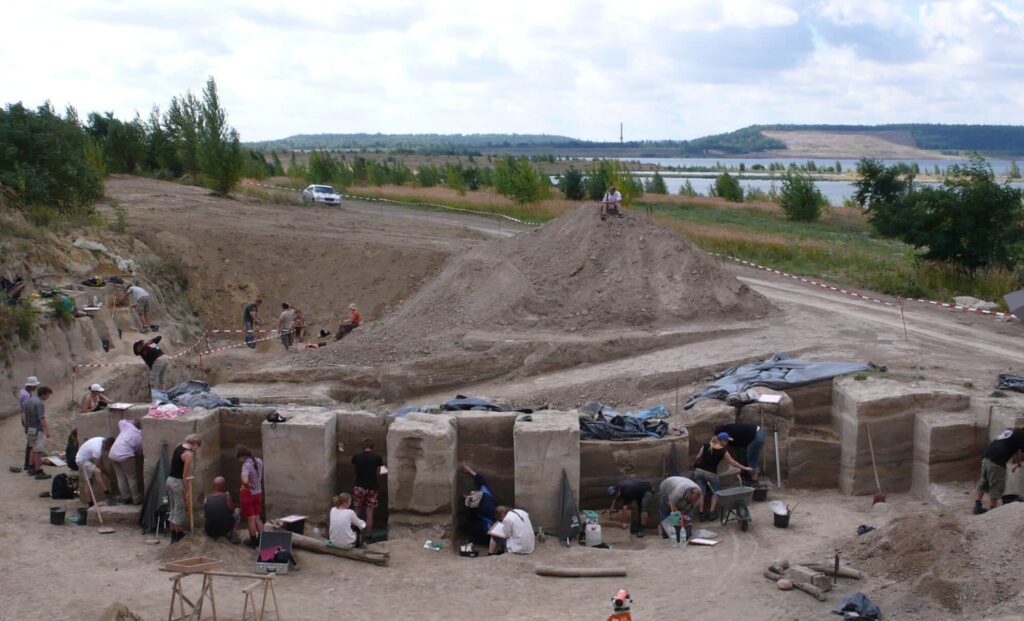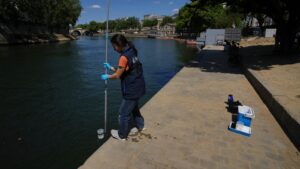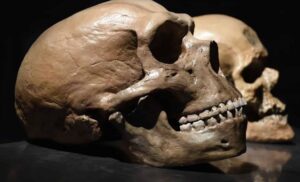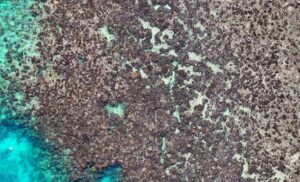
A groundbreaking study published in Science Advances has unveiled compelling evidence that Neanderthals were rendering fat from animal bones nearly 125,000 years ago. This discovery, made at the Neumark-Nord site in Germany, suggests that Neanderthals engaged in sophisticated food processing methods long before modern humans developed similar practices.
The Neumark-Nord region has provided a wealth of archaeological evidence indicating that Neanderthals practiced large-scale fat extraction from animal bones. This method was crucial for their survival, particularly during harsh winter months when plant-based carbohydrates were scarce. The bones processed by Neanderthals came from large mammals such as horses, bison, and deer, showcasing their ability to maximize caloric intake by extracting not only marrow but also the nutritious fats embedded in the bones.
Neanderthal “Fat Factory”: A Closer Look at Their Bone Processing
The archaeological site at Neumark-Nord 2/2B presents evidence of a specialized location where Neanderthals processed large quantities of animal bones into fat-rich nutrients. Researchers discovered remains of over 170 large mammals, which were processed for their marrow and fat. Notably, the bones were cracked, boiled, and skimmed to extract fats—a technique that supplemented their protein-heavy diet, which could otherwise result in protein toxicity.
“The discovery of this ‘fat factory’ predates similar evidence of fat rendering by modern humans by thousands of years, changing the timeline of early human food processing.”
The bones found at the site were predominantly from animals with high fat content, such as femurs and jawbones, and were subjected to extensive processing. These bones were crushed, heated, and boiled, suggesting that Neanderthals had an advanced understanding of how to extract and store fat from their prey for later use.
From Complete Bones to Tiny Fragments
At the Neumark-Nord 2/2B sites, imported bones were initially smashed open to extract marrow from the hollow cavities. Afterward, the bones were crushed and chopped into smaller pieces to facilitate the extraction of grease from both spongy and compact bone tissue. Approximately 2,000 tiny bone fragments accidentally came into contact with fire after boiling, resulting in typical coloration and texture commonly found in heated bones.
The Role of Fat in Neanderthal Diets: A Critical Survival Resource
Fat was an essential macronutrient for Neanderthals, especially given the high caloric demands required by their hunter-gatherer lifestyle. The extraction of fat from animal bones allowed Neanderthals to avoid “rabbit starvation,” a potentially fatal condition resulting from excessive protein intake. This adaptation was crucial during winter months when plant-based foods were less abundant, and fat from animals provided a much-needed energy source to sustain them through lean times.
Researchers believe that Neanderthals may have developed these fat rendering techniques as a response to the seasonal challenges of hunting and foraging. By processing fat-rich bones, they were able to create calorie-dense food sources that could be stored for later, providing necessary energy to survive through difficult months when other food sources were limited. This ability to adapt their food processing techniques likely contributed to their survival in challenging environments.
A Peek into Neanderthal Adaptability: The Evidence at Neumark-Nord
The Neumark-Nord findings not only reveal Neanderthal food processing strategies but also highlight their resourcefulness in utilizing available materials. The site was located near a water source, which likely facilitated the boiling process for extracting fats. Archaeologists also found evidence of extensive bone fragment clustering, indicating that Neanderthals were intentionally transporting and processing large quantities of bones from multiple animal species.
Interestingly, the excavation also uncovered signs of sophisticated tool use, including anvils and hammerstones, likely employed to break the bones and extract the fat. These findings indicate that Neanderthals were not just simple hunters but rather sophisticated foragers with a deep understanding of their environment and the resources available to them. The large-scale processing of animal bones for fat extraction was likely a collective effort, with Neanderthals working together to ensure the community’s survival during periods of scarcity.
As researchers continue to explore the Neumark-Nord site, the findings promise to shed further light on the complex survival strategies of Neanderthals and their remarkable adaptability in the face of environmental challenges. This new understanding of their dietary practices not only enriches the narrative of human evolution but also underscores the ingenuity of our ancient relatives.






